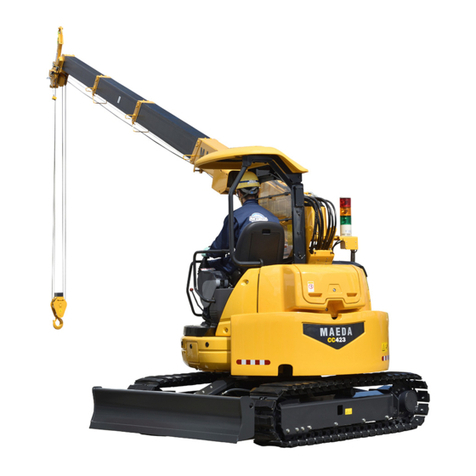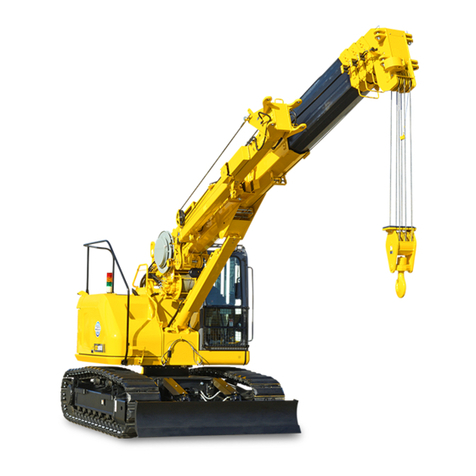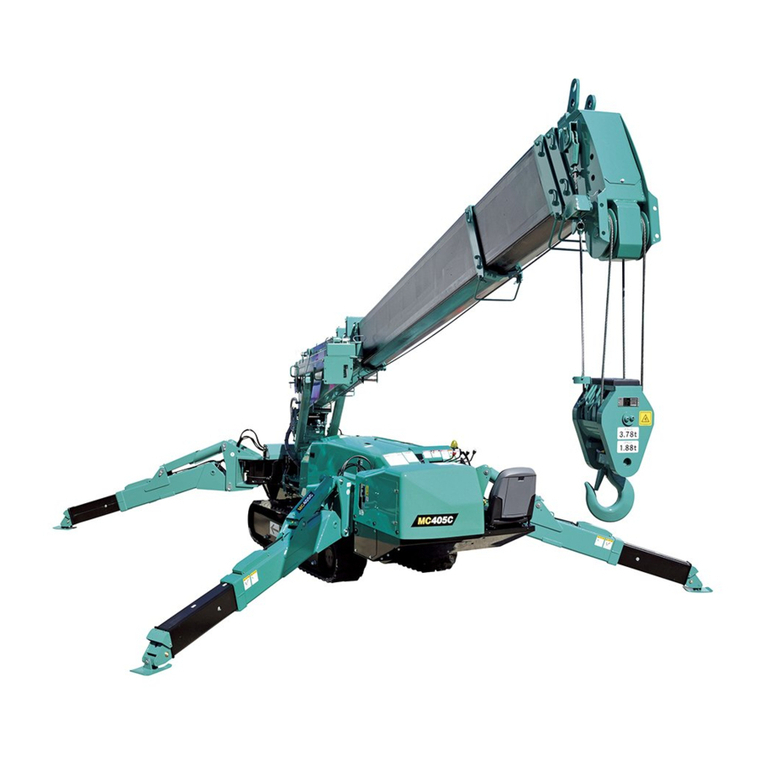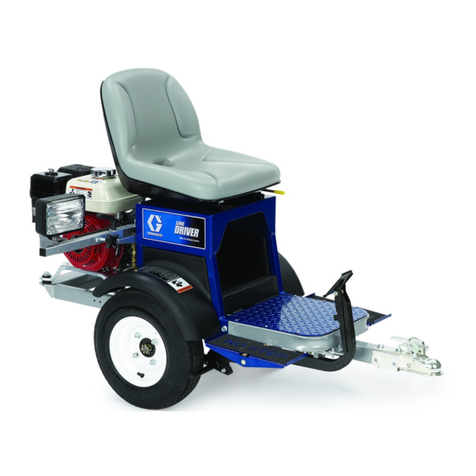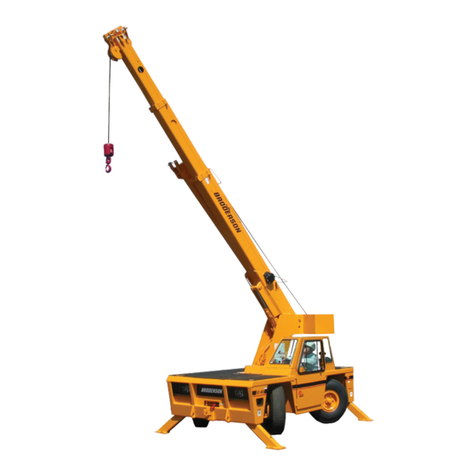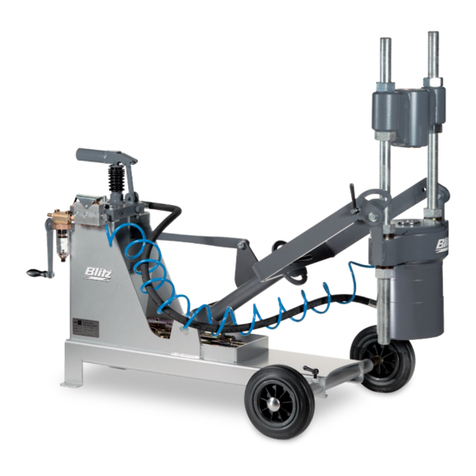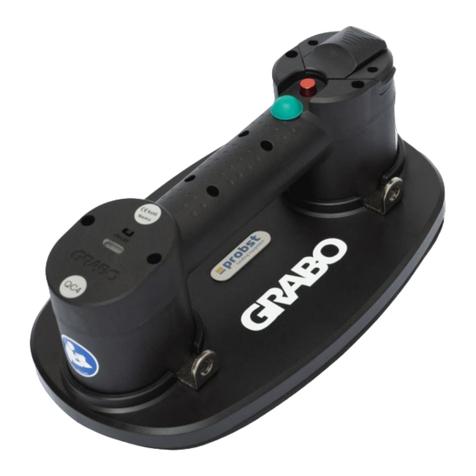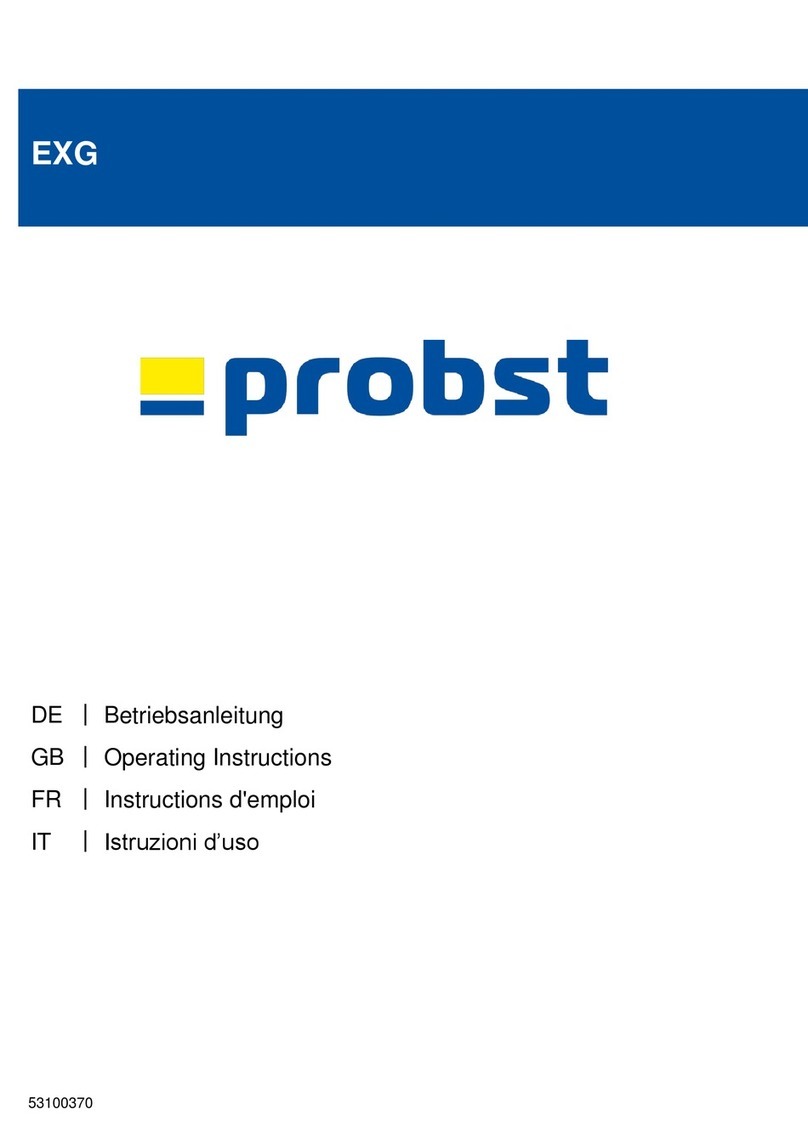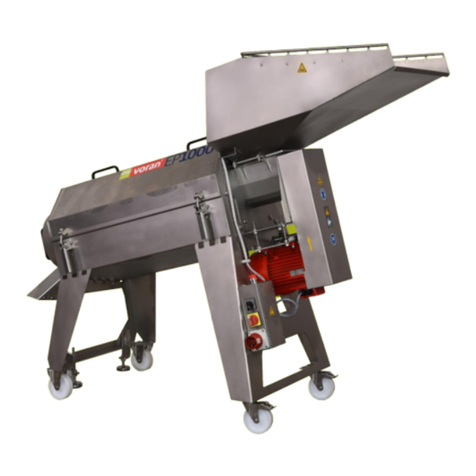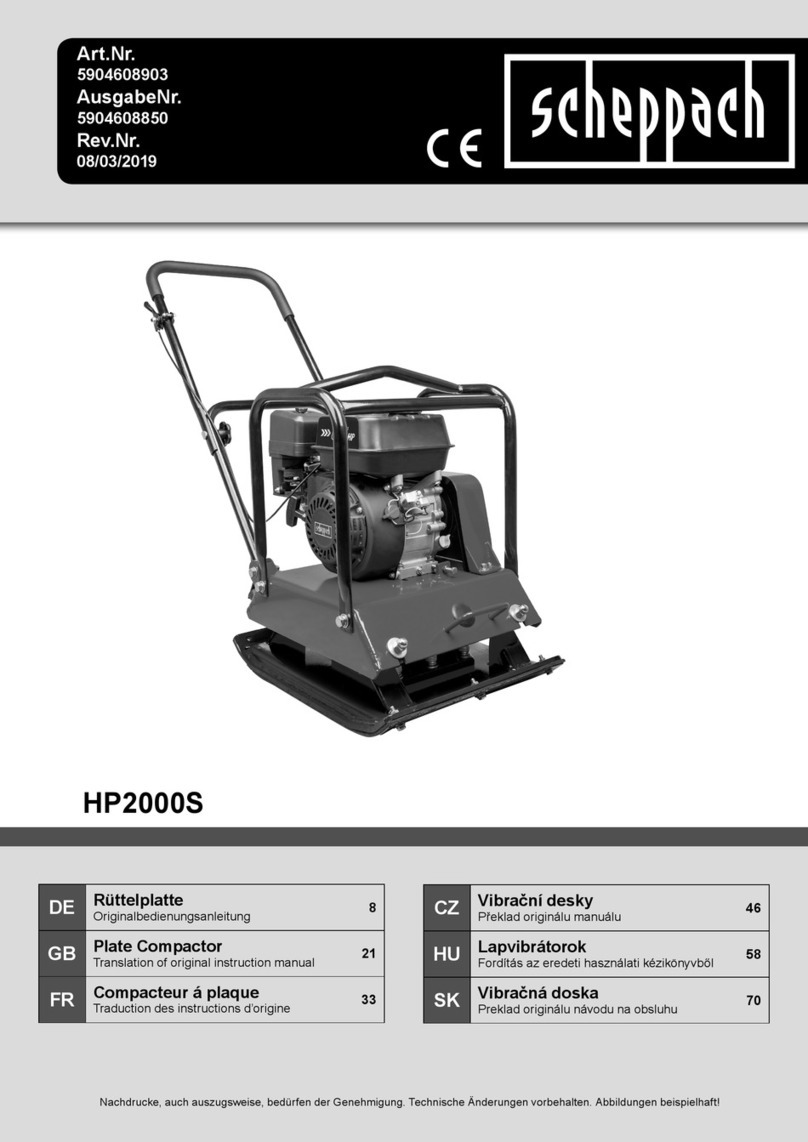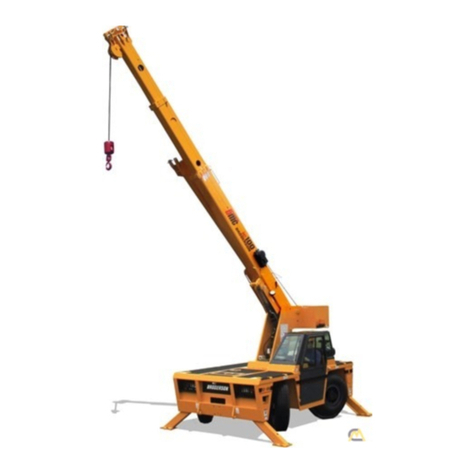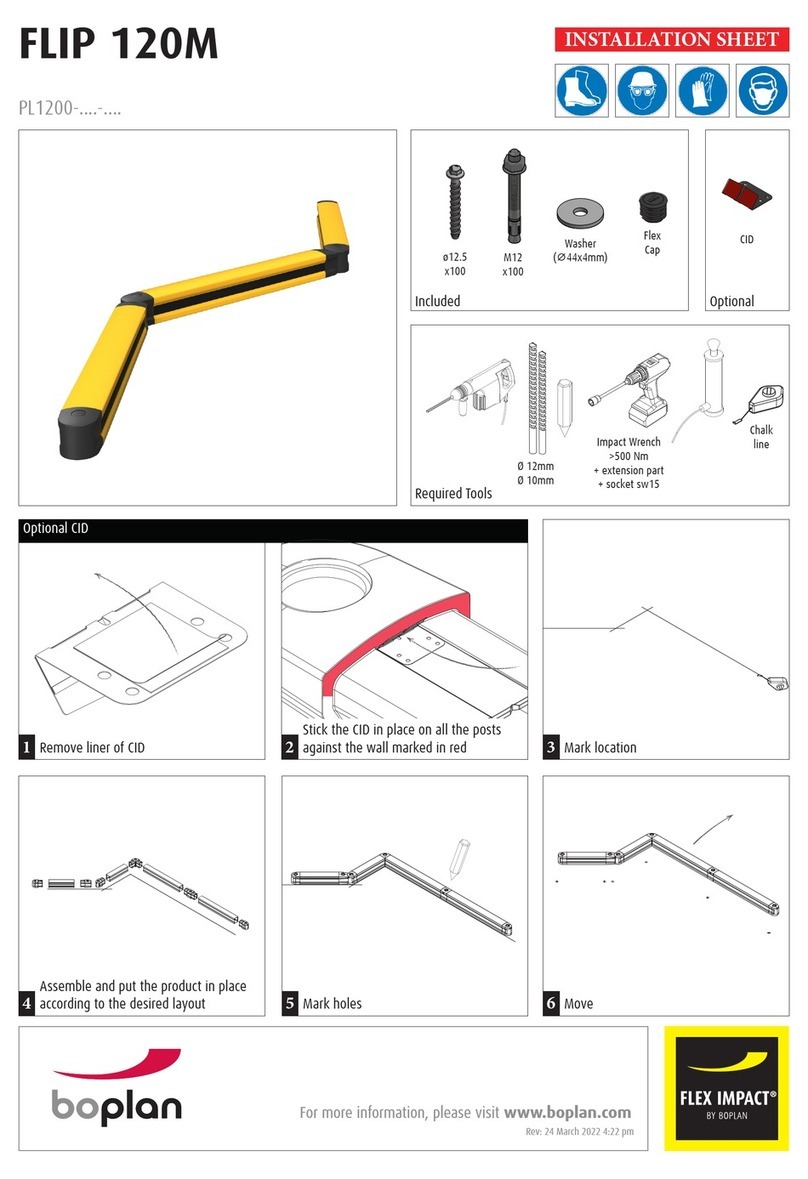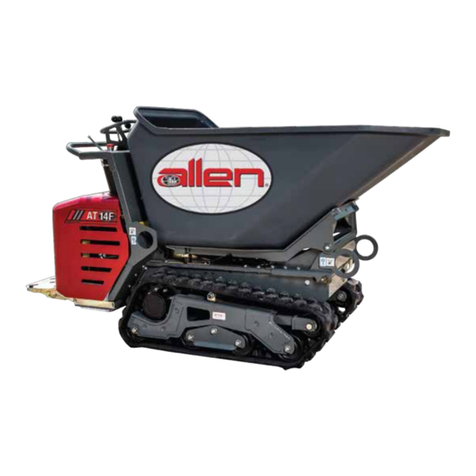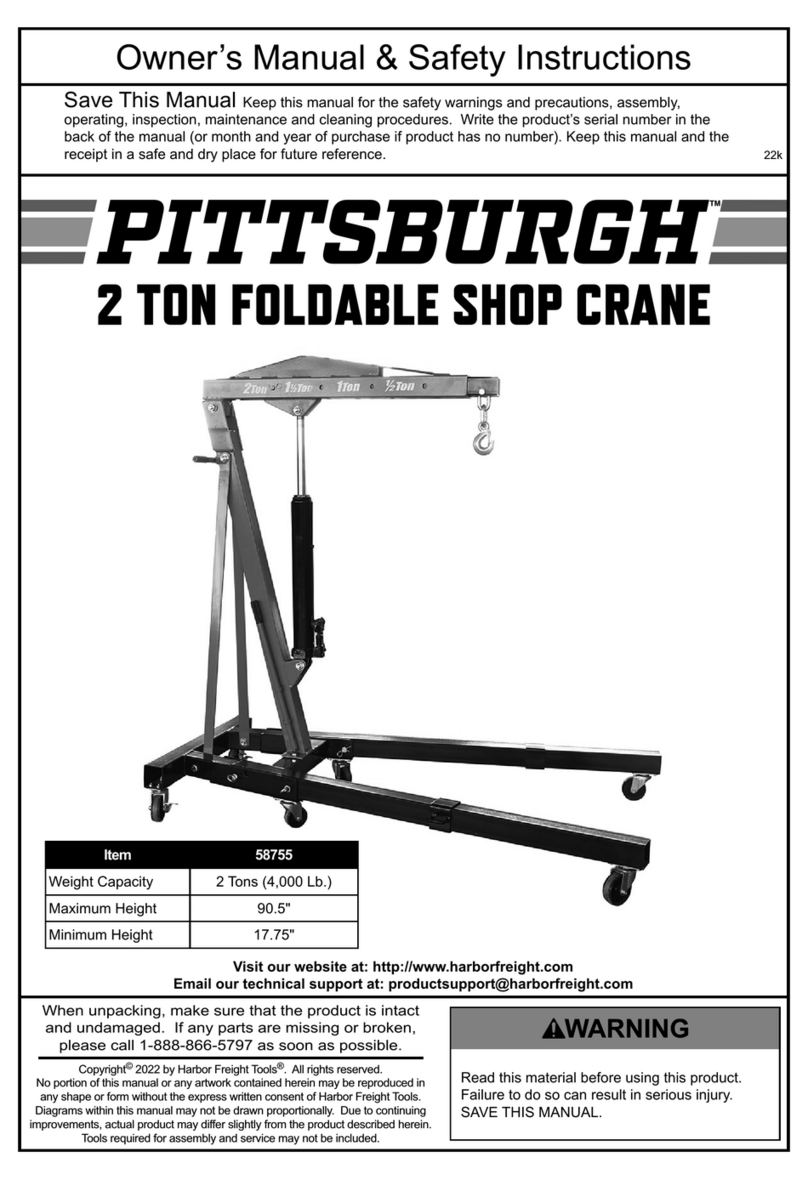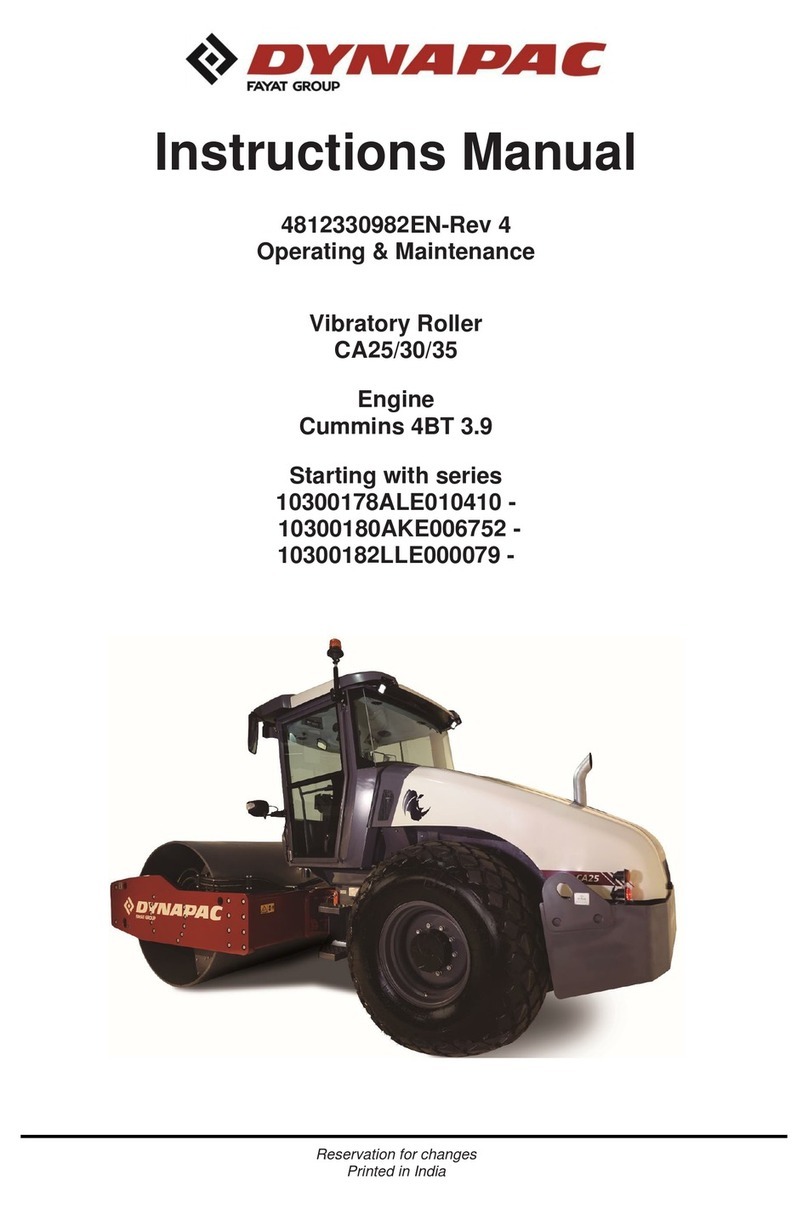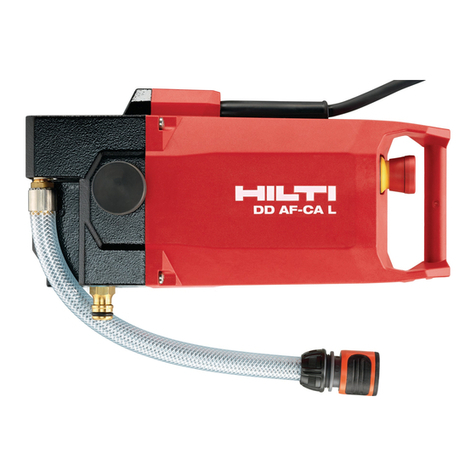Maeda MC-285C User guide

353E-OG0907-00
QUICK OPERATION GUIDE
MINI-CRAWLER CRANE
Serial No.P00001 and up
• This operation guide explains basic operation of the machine. Before starting work, always
conduct checks written in “2.1 Checking Before Operation” in the separate “Operation
Manual”.
For safety cautions and detailed operation of the machine not explained in this book, please
read and understand the separate “Operation Manual” before operating this machine.
• This operation guide does not replace the operation manual. This is just a short helpdesk
information paper to assist the trained operator of the crane with the basic operation of the
crane. For complete and detailed information we refer to the operation manual of the crane.

CONTENTS
ITEM Page
1. TRAVELLING OPERATION UNITS 3
2. CRANE OPERATION UNITS 3
3. STARTINGAND STOPPING THE ENGINE 4
4. TRAVELLING OPERATION 4
5. OUTRIGGER OPERATION 5
6. CRANE OPERATION 6
7. MOMENT LIMITER (OVERLOAD DETECTOR) 7
8. REMOTE CONTROL 8
8.1 PROCEDURE IN THE OPERATION MODE 9
8.2 OPERATION IN OUTRIGGER MODE 9
8.3 OPERATION IN CRANE MODE 10
8.4 SET-UPAND CANCEL MICRO SPEED 10
9. ELECTRIC MOTOR SPECIFICATION 10
FOR SAFE USE OF MACHINE
This manual classifies the risks into the following three categories to present the details of the safety
labels in easy-to-understand manner.
This denotes that there is an imminent hazard which will cause serious personal
injury or death.
The method of hazard circumvention is stated.
This denotes that there is a hazard which can cause serious personal injury or
death.
The method of hazard circumvention is stated.
This denotes that there is a potential hazard which may cause minor or
moderate personal injury or serious damage to this machine.
The method of hazard circumvention is stated.
This manual also provides the following to indicate what must be observed for the sake of the machine and
what will be of help.
This denotes that failure to handle the machine properly may damage the machine
or shorten its life.
This denotes helpful information.
CAUTION
NOTES

1. TRAVELLING OPERATION UNITS
(1)Acceleration lever
(2) Left travelling lever
(3) Right travelling lever
(4) Travelling lever stand lock lever
(5) Fuel gauge
(6) Hour meter
(7) Engine water temperature monitor
(8) Engine oil pressure monitor
(9) Charge monitor
(10) Main starter switch
(11) Horn switch
(12) Working light switch
(13) Fuse (15A)
(14) Fuse (20A)
(15) Fuse (15A)
(16) Emergency engine stopswitch
(17) Engineand electric motor switch
(MC285CRM-E only)
2. CRANE OPERATION UNITS
(1)Acceleration lever
(2) Slewing lever
(3) Boom telescoping lever
(4) Outrigger mode lamp
(5) Load meter
(6) Level
(7) Winch lever
(8) Boom derricking lever
(9)Alarm buzzer
(10) Outrigger control switch
(a) Outrigger [1] control switch
(b) Outrigger [2] control switch
(c) Outrigger [3] control switch
(d) Outrigger [4] control switch
(11) Horn switch
(12)Auxiliary starter switch
(13) Emergency engine stopswitch
(14) Hook stowing switch
(15) Emergency stop cancel switch
-3-

3. STARTING AND STOPPING THE ENGINE
[1] STARTING THE ENGINE WITH MAIN STARTER SWITCH
1. Push the acceleration lever upward to operate the engine at medium speed(lever stroke about midway).
2. Insert the key and turn it left (preheating) for about fourseconds or until the glow lamp light goes out.
3. Turn the key to the right to start the crane.
[2] STOPPING THE ENGINE WITH MAIN STARTER SWITCH
1. Pull the acceleration lever downward andchange the engine speed to low idling.
2. Turn the main starter switch key to the OFF position. The engine stops.
[3] STARTING THE ENGINE WITH AUXILIARY STARTER SWITCH
1. Insert the key into the main starter switch and turn the key to the ON position.
2. Pull back the acceleration lever toward you to operate the engine at medium speed (lever strokeabout midway).
3. Push the auxiliary starter switch up to the START position (upward) until the machine starts. Then release the starter
switch and it will return to the neutral position.
[4] STOPPING THE ENGINE WITHAUXILIARY STARTER SWITCH
1. Push the acceleration lever forward and change theengine speed to low idling.
2. Push the auxiliary starter switch down to the STOPposition (downward). The engine stops.
3. Turn the main starter switch key to the OFF position.
4. TRAVELLING OPERATION
[1] STARTING/MOVING MACHINE
To start travelling, put the travel lever stand to the TRAVEL position
(upwards).
To move the machine, there are two levers which work independently.
The left lever operates the left rubber track, the right lever operates the right
rubber track.
• To move forward, push both levers to the front.
• To move backward, pull both levers to the back.
[2] CHANGING PATH OF MACHINE
[3] STOPPING/PARKING MACHINE
Changing the machine direction
while being stopped
Changing path while moving
Forward/Backward
Spin turns
Return the left and right travelling levers to the NEUTRAL position at the same time. The brakes are automatically
applied and the machine will stop.
-4-

5. OUTRIGGER OPERATION
(1) Outrigger base (6) Stay (Damper type) (10) Inner box
OUTRIGGER COMPONENTS
(2) Outrigger cylinder (7) Outrigger top position pin (11) Outrigger adapter (Foot)
(3) Outrigger rotary (8) Inner boxposition pin (12) Snap pin
(4) Rotary position pin (9) Outrigger top (13) Snap pin
There are four outriggers installed on the machine. Although the setting
method is described for just one outrigger (outrigger (3), set the other three
outriggers in the same way.
[1] OUTRIGGER SET UP OPERATION
It is forbidden to work with the crane without the outriggers.
(1) TASKS TO BE PERFORMED UPON ENGINE STOP
1. Rotate the outriggers as much as possible (check this with the alignment
of the “STANDARD” decals). Secure with the position pin.
2.Open (lift up) the outriggers as much as possible and secure with the
position pin and snap pin.
3.Pull out the inner box from the outrigger top as much as possible and
secure with the position pin and snap pin.
-5-

(2) TASKS TO BE PERFORMED AFTER STARTING ENGINE
CAUTION
Before working with the outriggers and the crane, set the travel
lever stand in CRANE position. (push the travel lever stand down)
1. Put the outriggers down ONE by ONE until they all just touch the ground.
2. Then use the outriggers TWO by TWO to stabilize thecrane.
3. Check the bubble in the level in order to make sure the craneis in the correct position.
4. Make sure the rubber tracks are about 80mm above the ground.
[2] OUTRIGGER STOWING OPERATION
Reverse the outrigger set up procedure to stow the outrigger.
6. CRANE OPERATION
[1] OPERATIONS BEFORE CRANE OPERATIONS
CAUTION
Before working with the outriggers and the crane, set the travel
lever stand in CRANE position. (push the travel lever stand down)
Never let the hook block touch the ground or let the winch rope slacken. This could damage the
winch rope.
Un-stow the hook block :
Lower off the winch rope and raise the boom, until you can un-stow the hook.
NOTES
When extending the boom, always Lower the hook block
simultaneously.
[2] CRANE OPERATIONS
There are 4 possible crane operations :
(2): Slewing (forward: counterclockwise, backward: clockwise)
(3): Boom telescoping (forward: extend, backward: retract)
(7): Hook rasing and lowering
(forward: lowering, backward: raising)
(8): Boom derricking (forward: lowering, backward: raising)
-6-

[3] CRANE STOWING OPERATION
1. Completely retract the boom and slew until the boom is over the center of the crane. Lower the boom to the
maximum (it stops automatically).
2. Attaching the hook block in the hook hanger:
Hoist up the hook block to the over hoist protection. Attach the hook to the hanger and raise the hook block using the
over hoist DETECTOR (see drawing) and simultaneously pull the winch lever towards you.
3. Warning : Be careful with the over hoist detector. The hook block will not stop automatically, so don’t apply to much
tension, but apply enough tension to stop the hook block from moving .
7. MOMENT LIMITER (OVERLOAD DETECTOR)
MOMENT LIMITER FUNCTIONS
[1] PROHIBITED ACTIONS AFTER AUTO STOP
The following crane operations are prohibited after the crane has stopped automatically due to overloading.
These operations may cause overturning of the machine or breakage of the boom and are very dangerous.
• Boom lowering operation • Boom extending operation • Hook raising operation
• Crane slewing operation
[2] OVERLOAD WARNING
1. PRE-WARNING:
“Actual load” is 70 to less than 100 % of the “rated total load”.
• The LED “70~100” on the moment limiter display lights up.
• The alarm bleeps intermittently.
• The working status lamp changes from green to yellow.
2. LIMIT WARNING:
“Actual load” is 100 % or higher than the “rated total load”.
• The LED “100~” on the moment limiter display lightsup.
• The alarm sounds continuously.
• The working status lamp changes from yellow to red.
• The hazardous operation of the crane stops automatically.
(Hook raising, boom lowering, boom extending)
3. RECOVERY OPERATIONAFTERAUTO STOP
If the system stops automatically, promptly perform one offollowing the recovery operation caused by overloading.
(1) Hook lowering operation
(2) Boom raising operation (never raise the boom to lift the load from the ground, always winch the load clear of the
ground before any other operation is performed)
(3) Boom retracting operation
-7-

-8-
(1) Boom angle display
(2) Lifting height display
(3) Boom length display
(4) Boom lifting height upper limit switch
(5) Over hoist detection LED (Red)
(6)Actual load display
(7) Rated total load display
(8) Boom angle lower limit switch
(9) Working radius display
(10) Working radius upper limit switch
(11) Boom angle upper limit switch
(12) Outrigger extension LED (Orange)
(13) Check switch
(14) Cancel switch
(15) Load capacity LED (Orange)
(16) Fall mode selector & Searcher hook
mode switch
MOMENT LIMITER DISPLAY
8. REMOTE CONTROL
TRANSMITTER
(1) LCD Screen (8) Slewing/No.1 Outrigger Operation Lever
(2) Start/Reset Button (9) Boom Telescoping/No.2 Outrigger Operation Lever
(3) Stop/EMO Button (10) Hook Raising and Lowering/No.3 Outrigger Operation Lever
(4) Speed/Mode Button (11) Boom derricking/No.4 Outrigger Operation Lever
(5) Setting Button (12)Accelerator Lever
(6) Horn Button (13) Grip
(7) Power Switch (14) Connection Cable

8.1 PROCEDURE IN THE OPERATION MODE
[1] CALL UP CRANE MODE
1. Push the Power button to turn ON the Transmitter.
2. The “Crane mark” is displayed in the LCD screen for about 2 seconds.
3. The crane is ready for operation.
[2] CALL UP OUTRIGGER MODE
1. Push the Power button to turn ON the Transmitter.
2. The “Crane mark” is displayed in the LCD screen for about 2 seconds.
3. While the “Crane mark” is displayed, push the speed button for about 2 seconds. The LCD provides the screen for
selecting “CRANE MODE”or “OUTRIGGER MODE”.
4. Use the Hook raising and lowering Lever to shift the cursor ( or ), and push the Setting button when the cursor
points to the “OUTRIGGER”.
8.2 OPERATION IN OUTRIGGER MODE
The outriggers of the crane are numbered from 1 to 4 and these correspond
to the numbers of each operation lever on the remote control.
NOTES
If you want to START any action, always use the operation lever first and only afterwards pull the
accelerator (slowly).
If you want to END any action, first release the accelerator slowly, and then release the operation lever.
1. Put the outriggers down ONE by ONE (by pushing down the levers) until they all justtouch the ground.
2. Then use the outriggers TWO by TWO to stabilize thecrane.
3. Check the bubble in the level in order to make sure the craneis in the correct position.
4. Make sure the rubber tracks are about 80mm above the ground.
For stowing the outriggers : push the operation leversup. -9-

8.3 OPERATION IN CRANE MODE
Four Crane operation switches are provided. Each controls the following
operation, respectively. (See the figure on the right.)
(1): Slewing (upper: counterclockwise, lower: clockwise)
(2): Boom telescoping (upper: extend, lower: retract)
(3): Hook rasing and lowering (upper: raising, lower: lowering)
(4): Boom derricking (upper: raising, lower: lowering)
8.4 SET-UP AND CANCEL MICRO SPEED
The speed of the crane can also be controlled by the MICRO SPEED MODE.
Just push the speed/mode button and each push will forward the LCD screen
indication as shown in the diagram to the right.
9. ELECTRIC MOTOR
If electric motor is required, please attach a electric cable and turn the engine
and electric motor switch to the “Electric Motor” (upper) position. To start the
electric motor, simply insert the key into the main starter switch and turn on
the engine. (Pre-heating is not necessary.)
All other operations (travelling – outriggers – crane) are the same as
described in previous chapters.
-10-

MAEDA MINI-CRAWLER CRANE MC-285C QUICK OPERATION GUIDE
Document No: 353E-OG0907-00
First edition: July 15, 2009
Issued by Maeda Seisakusyo Co., Ltd.
1095 Onbegawa, Shinonoi
Nagano, Nagano 388-8522,
Japan
No part of this manual can be reproduced in any from without permission
-11-
Other manuals for MC-285C
1
Table of contents
Other Maeda Construction Equipment manuals
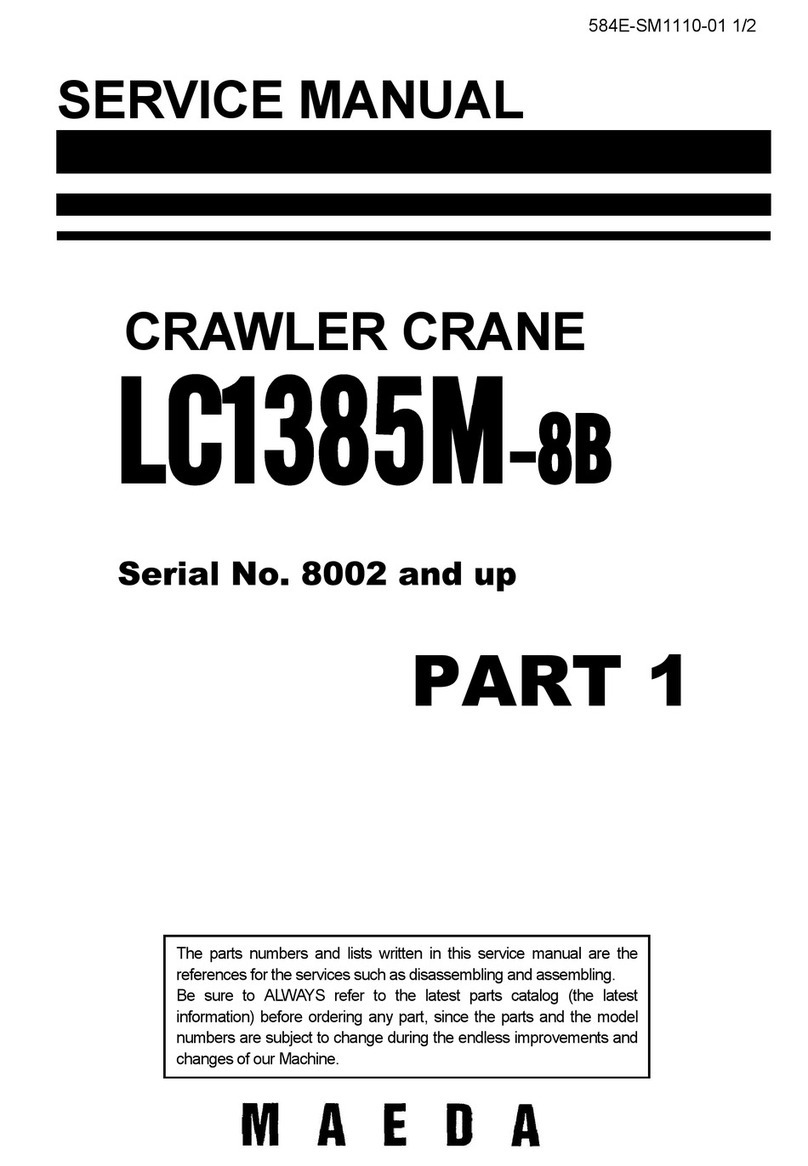
Maeda
Maeda LC1385M-8B User manual
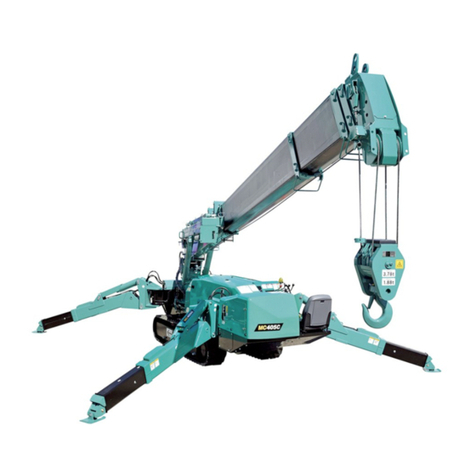
Maeda
Maeda MC-104C-2 User manual
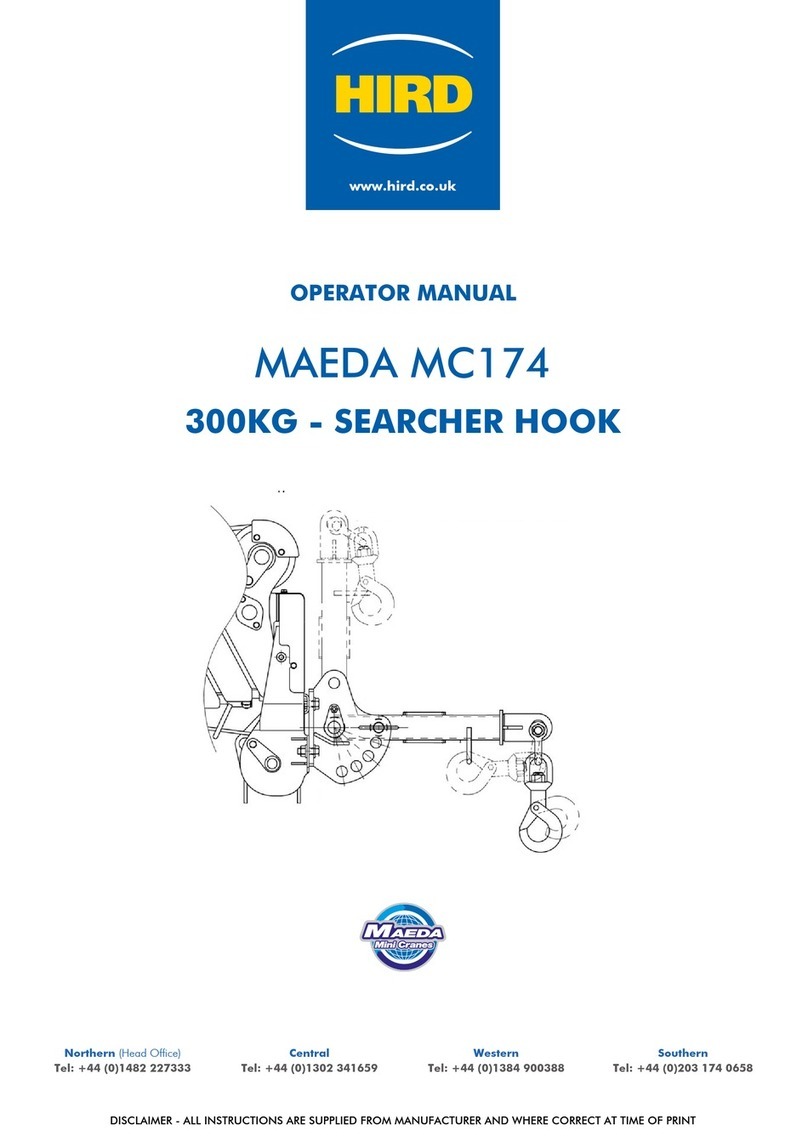
Maeda
Maeda MC174 User manual
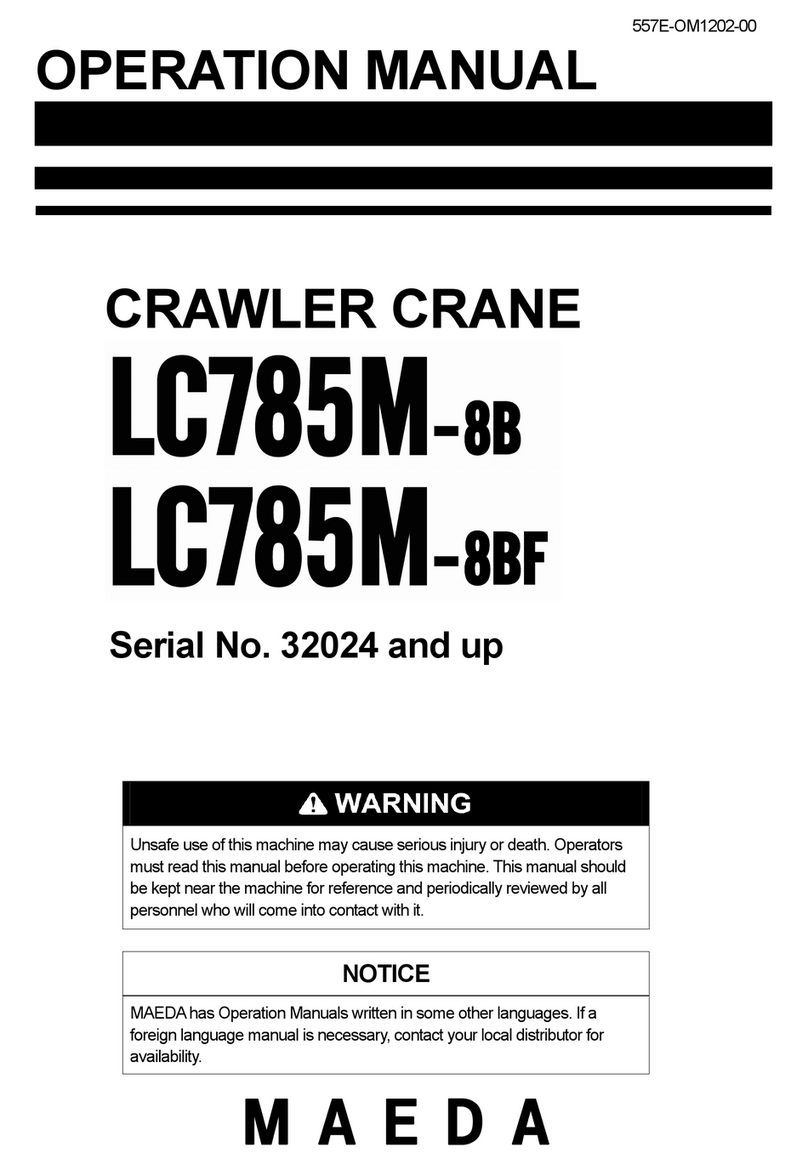
Maeda
Maeda LC785M-8B User manual
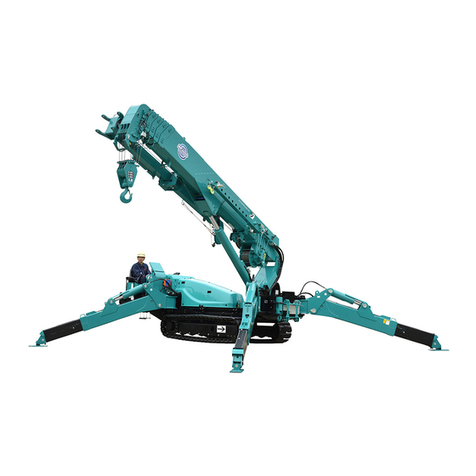
Maeda
Maeda MC815C User guide
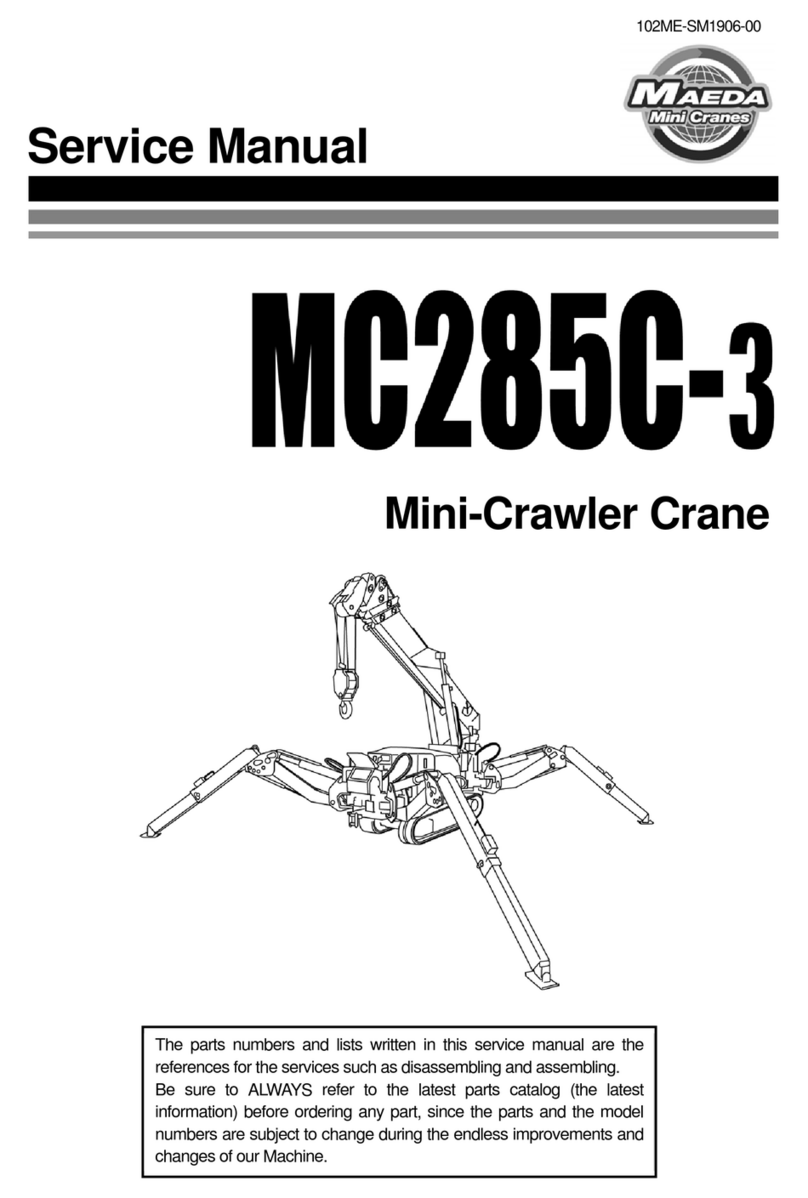
Maeda
Maeda MC285C-3 User manual
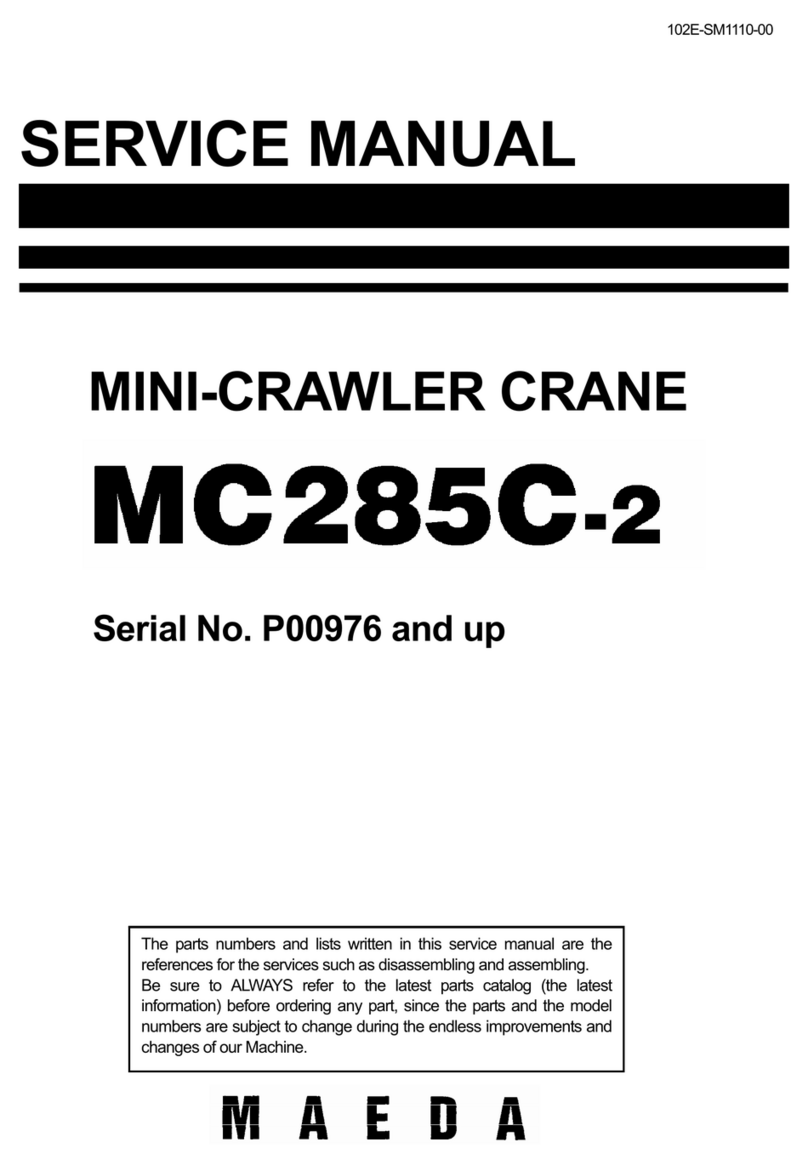
Maeda
Maeda MC285C-2 User manual
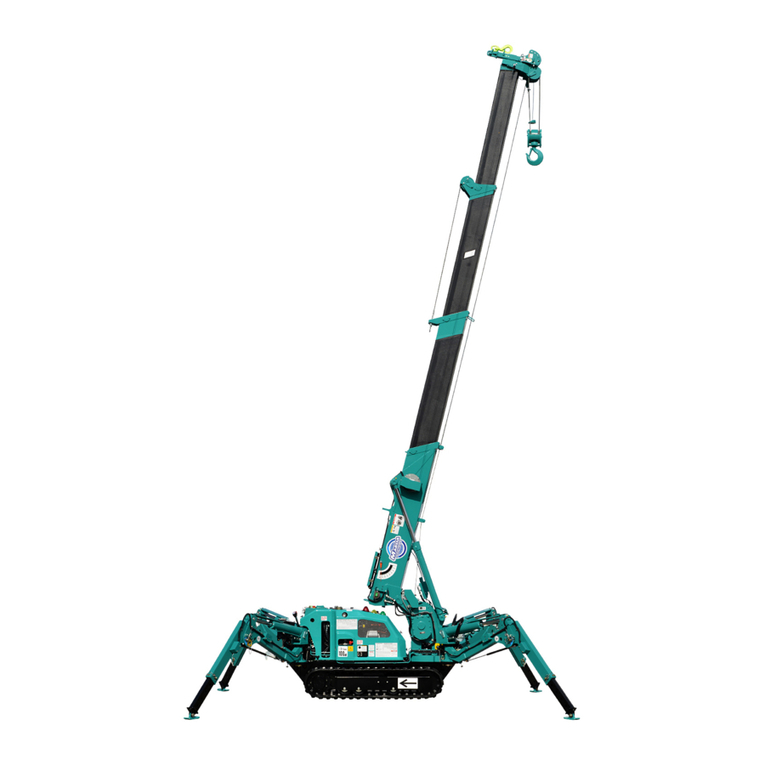
Maeda
Maeda MC-174CRM User guide
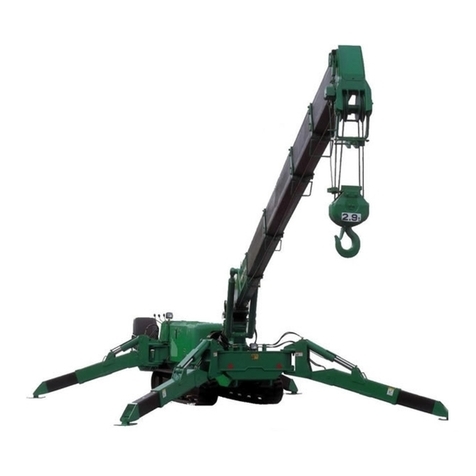
Maeda
Maeda MC-305C-2 User manual
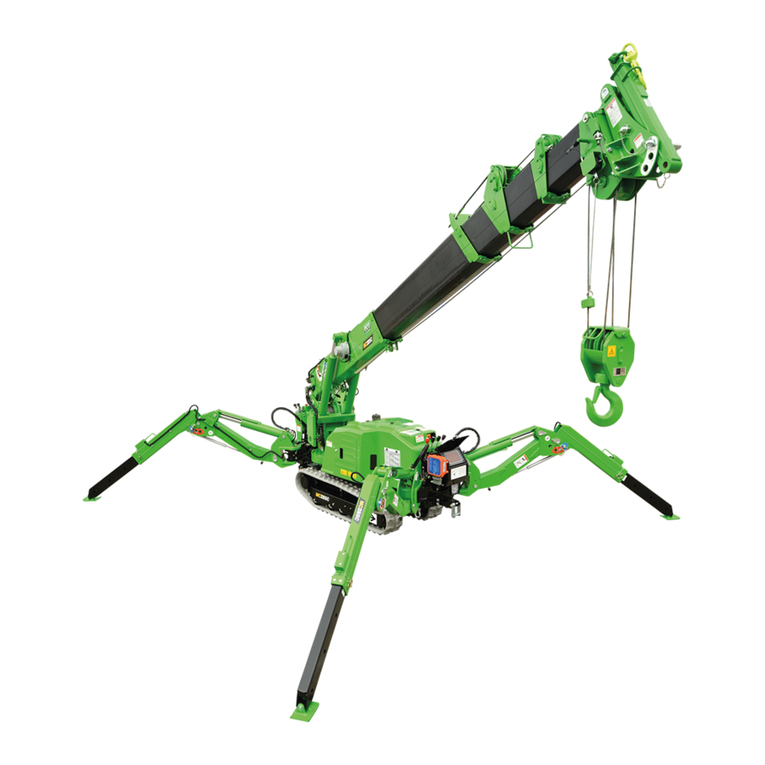
Maeda
Maeda MC285CB-3 User manual
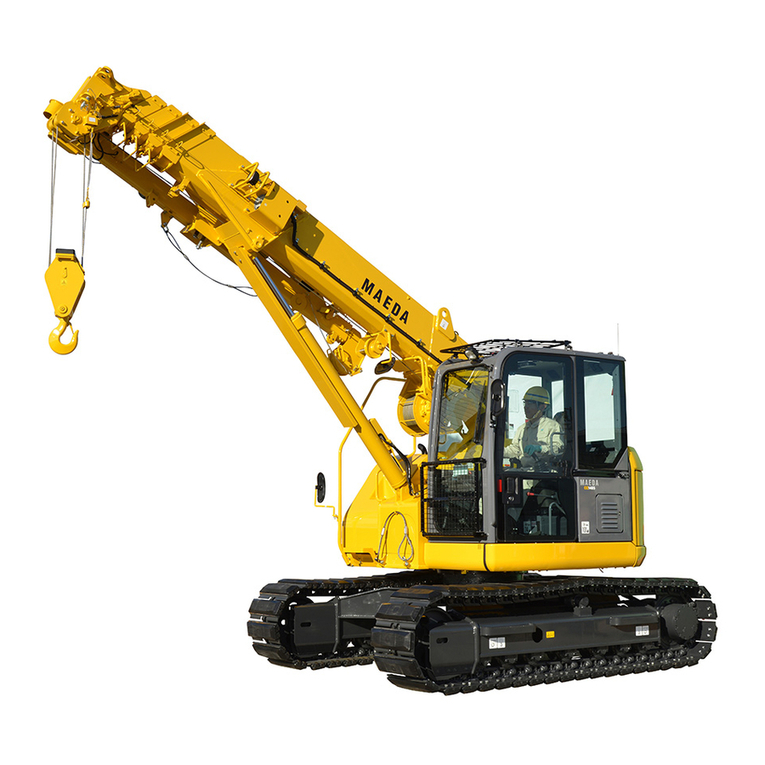
Maeda
Maeda CC1485S-1 User guide
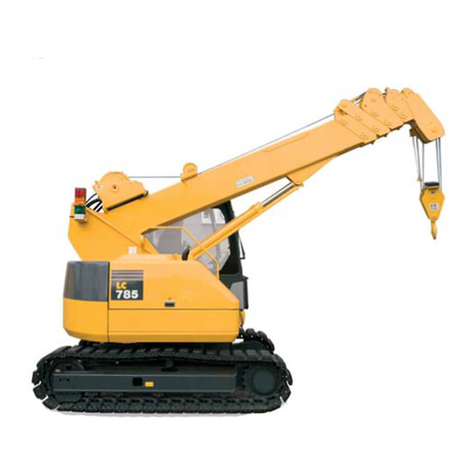
Maeda
Maeda LC785M-6B User manual

Maeda
Maeda MC815C User manual

Maeda
Maeda MC815C User manual
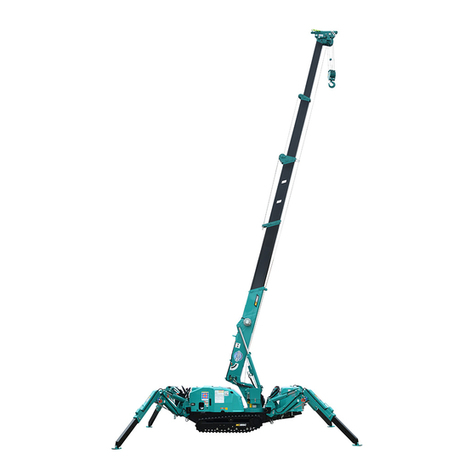
Maeda
Maeda MC285C-3 User manual
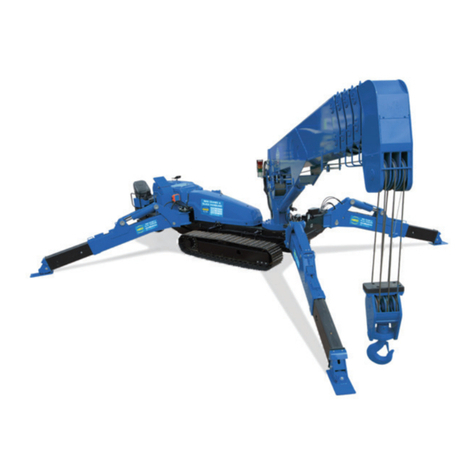
Maeda
Maeda HIRD MC815 User manual
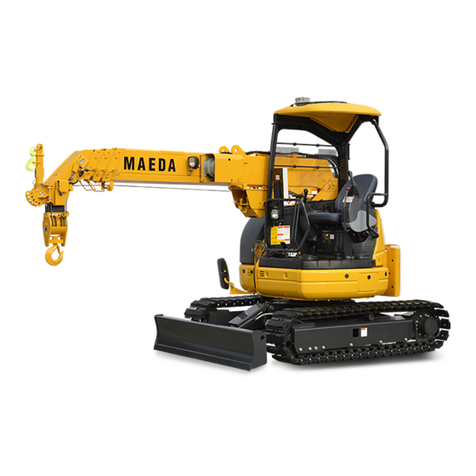
Maeda
Maeda LC383M-5 User manual

Maeda
Maeda MC-174CRM User manual

Maeda
Maeda MC-174CRM User manual
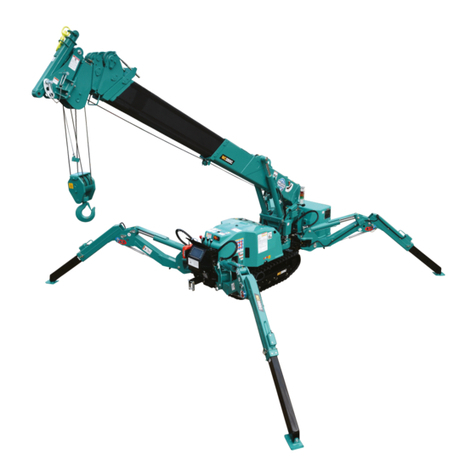
Maeda
Maeda MC-285C User manual
